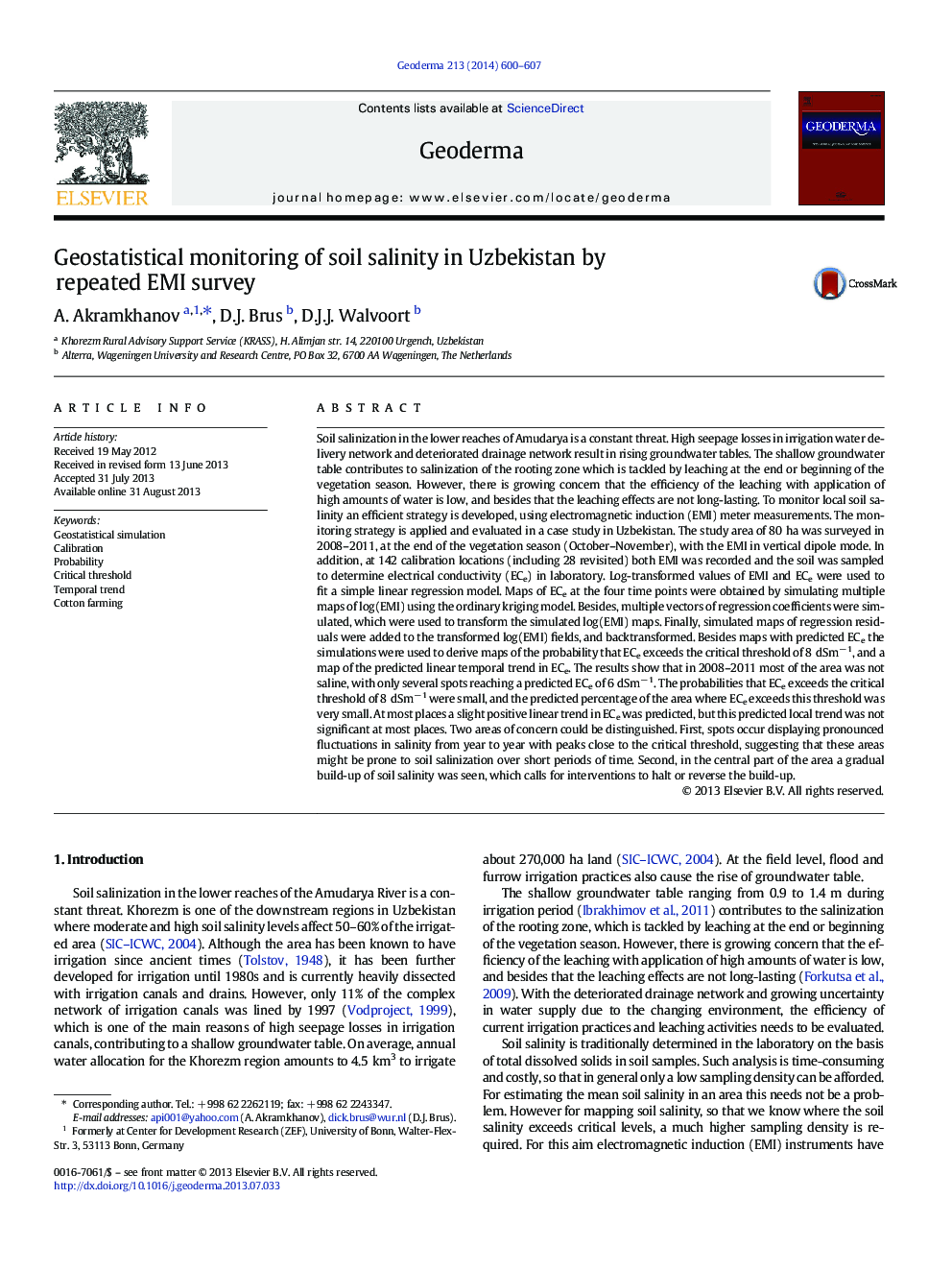| کد مقاله | کد نشریه | سال انتشار | مقاله انگلیسی | نسخه تمام متن |
|---|---|---|---|---|
| 6409043 | 1629479 | 2014 | 8 صفحه PDF | دانلود رایگان |

- Geostatistical simulation of soil salinity from electromagnetic surveys in 2008-11
- Probabilities that ECe exceeds the critical threshold of 8 dSmâ 1 were small.
- Most places showed a slight positive linear temporal trend in ECe.
- Areas with high fluctuations in salinity are prone to quick changes.
Soil salinization in the lower reaches of Amudarya is a constant threat. High seepage losses in irrigation water delivery network and deteriorated drainage network result in rising groundwater tables. The shallow groundwater table contributes to salinization of the rooting zone which is tackled by leaching at the end or beginning of the vegetation season. However, there is growing concern that the efficiency of the leaching with application of high amounts of water is low, and besides that the leaching effects are not long-lasting. To monitor local soil salinity an efficient strategy is developed, using electromagnetic induction (EMI) meter measurements. The monitoring strategy is applied and evaluated in a case study in Uzbekistan. The study area of 80 ha was surveyed in 2008-2011, at the end of the vegetation season (October-November), with the EMI in vertical dipole mode. In addition, at 142 calibration locations (including 28 revisited) both EMI was recorded and the soil was sampled to determine electrical conductivity (ECe) in laboratory. Log-transformed values of EMI and ECe were used to fit a simple linear regression model. Maps of ECe at the four time points were obtained by simulating multiple maps of log(EMI) using the ordinary kriging model. Besides, multiple vectors of regression coefficients were simulated, which were used to transform the simulated log(EMI) maps. Finally, simulated maps of regression residuals were added to the transformed log(EMI) fields, and backtransformed. Besides maps with predicted ECe the simulations were used to derive maps of the probability that ECe exceeds the critical threshold of 8 dSmâ 1, and a map of the predicted linear temporal trend in ECe. The results show that in 2008-2011 most of the area was not saline, with only several spots reaching a predicted ECe of 6 dSmâ 1. The probabilities that ECe exceeds the critical threshold of 8 dSmâ 1 were small, and the predicted percentage of the area where ECe exceeds this threshold was very small. At most places a slight positive linear trend in ECe was predicted, but this predicted local trend was not significant at most places. Two areas of concern could be distinguished. First, spots occur displaying pronounced fluctuations in salinity from year to year with peaks close to the critical threshold, suggesting that these areas might be prone to soil salinization over short periods of time. Second, in the central part of the area a gradual build-up of soil salinity was seen, which calls for interventions to halt or reverse the build-up.
Journal: Geoderma - Volume 213, January 2014, Pages 600-607